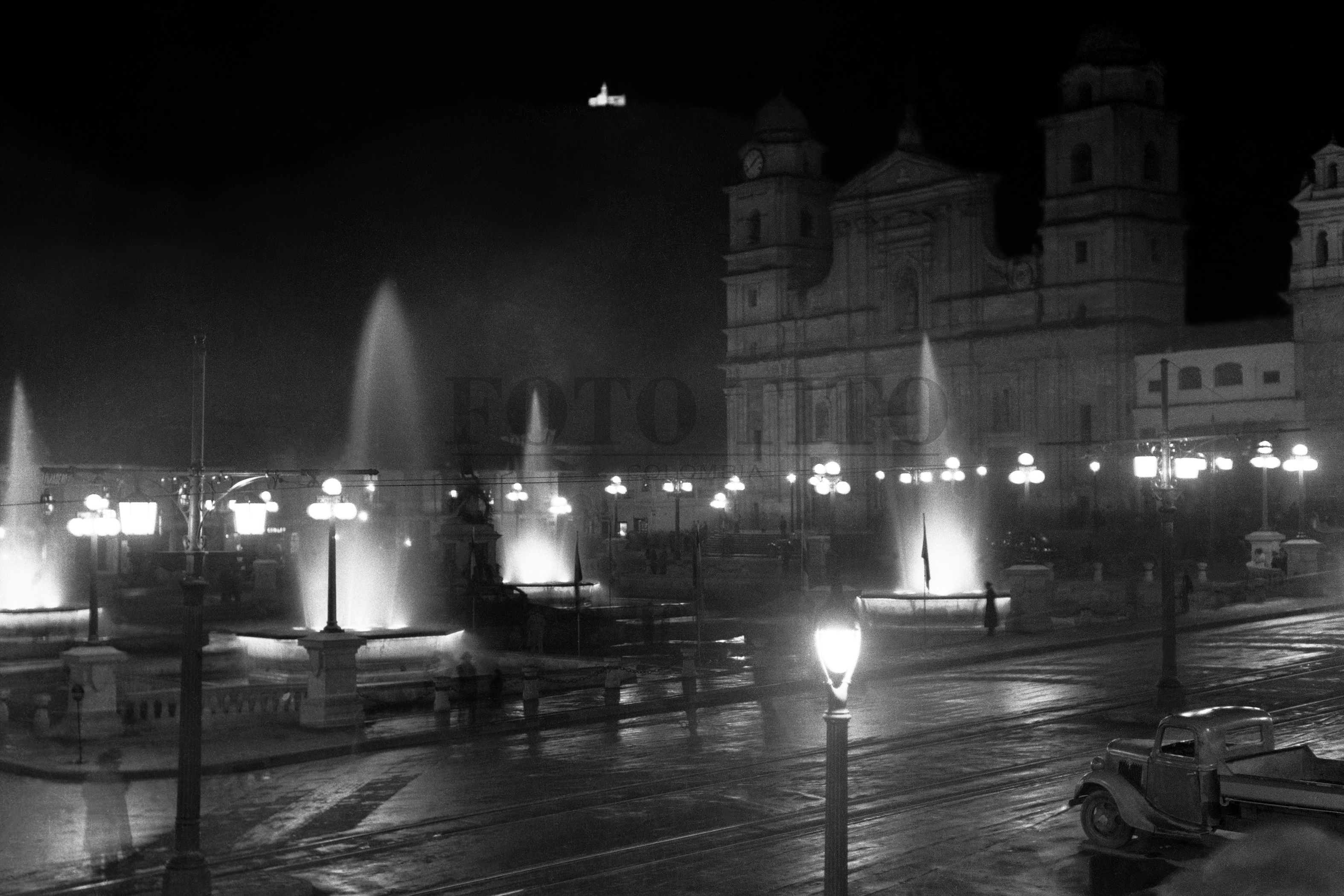
illuminated Fountains
It was Bogota’s 400th-year celebration. The Basilica of Monserrate and other important buildings were specially illuminated for the occasion. This photo was taken in the evening of the 6th of August.
Some people think they see “ghostly images” in it. The truth is that it is a technical overexposure that was necessary to successfully take this photo at night.
1/18 firts collection
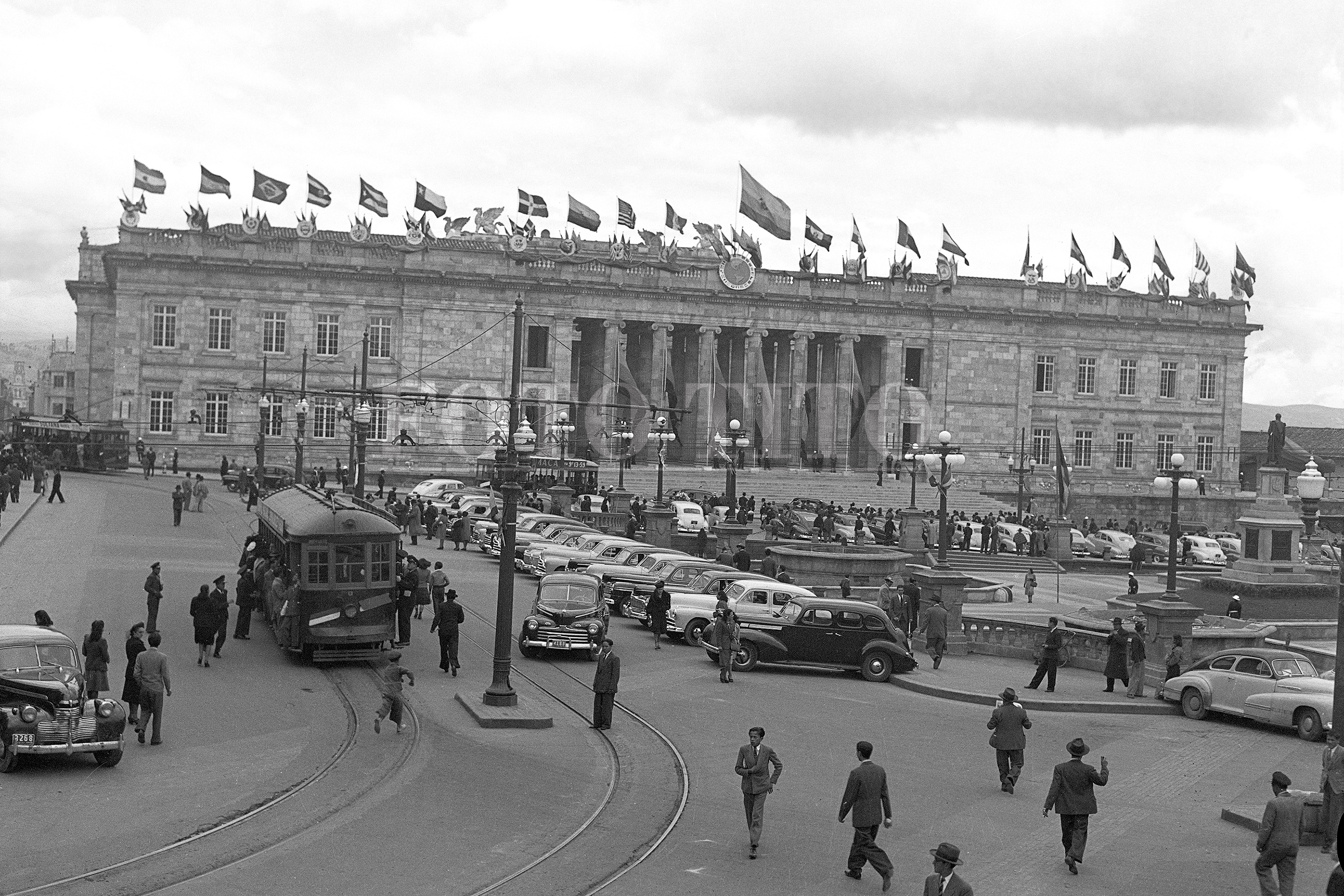
Pan-American Conference
The National Capitol Building displayed the flags of all the attending countries at the conference. The construction of the Avenida de las Americas (Avenue of the Americas) that connected the international airport “Aeropuerto de Techo” to the city’s downtown was completed. Hotels, restaurants, and all tourist sites were prepared to welcome all the countries’ representatives, journalists, and visitors. The city looked impeccable with decorated parks and gardens. Even the homeless were relocated from the centre of the city. This was the way Bolivar Square looked on the 8th of April. However, everything would be quite different the following day…
2/18 First collection
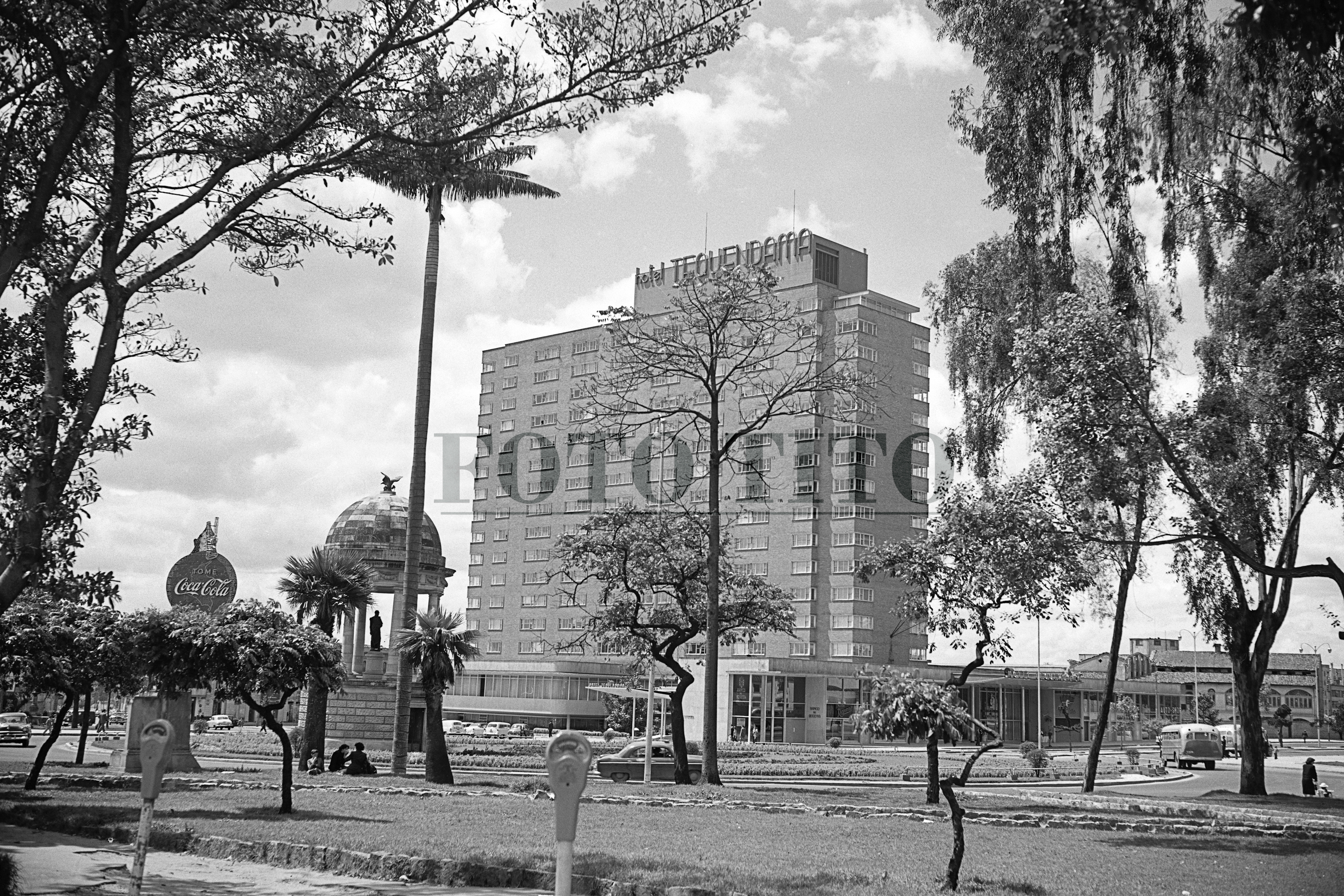
Tequendama Hotel
Bogotá opened a modern and luxurious hotel with “first-class” features. Its beautiful exterior design was complemented with all the services tourists could wish for: restaurants, casinos, coffee-bars, travel agencies, banks, boutiques, event rooms, and more. The parks Centenario (“Centennial”) and de La Independencia (“The Independence”) were the favourite destinations for the citizens of Bogota. The first parking meters were installed in this area but never functioned optimally. They were popularly called “robbing meters”
3/18 first collection
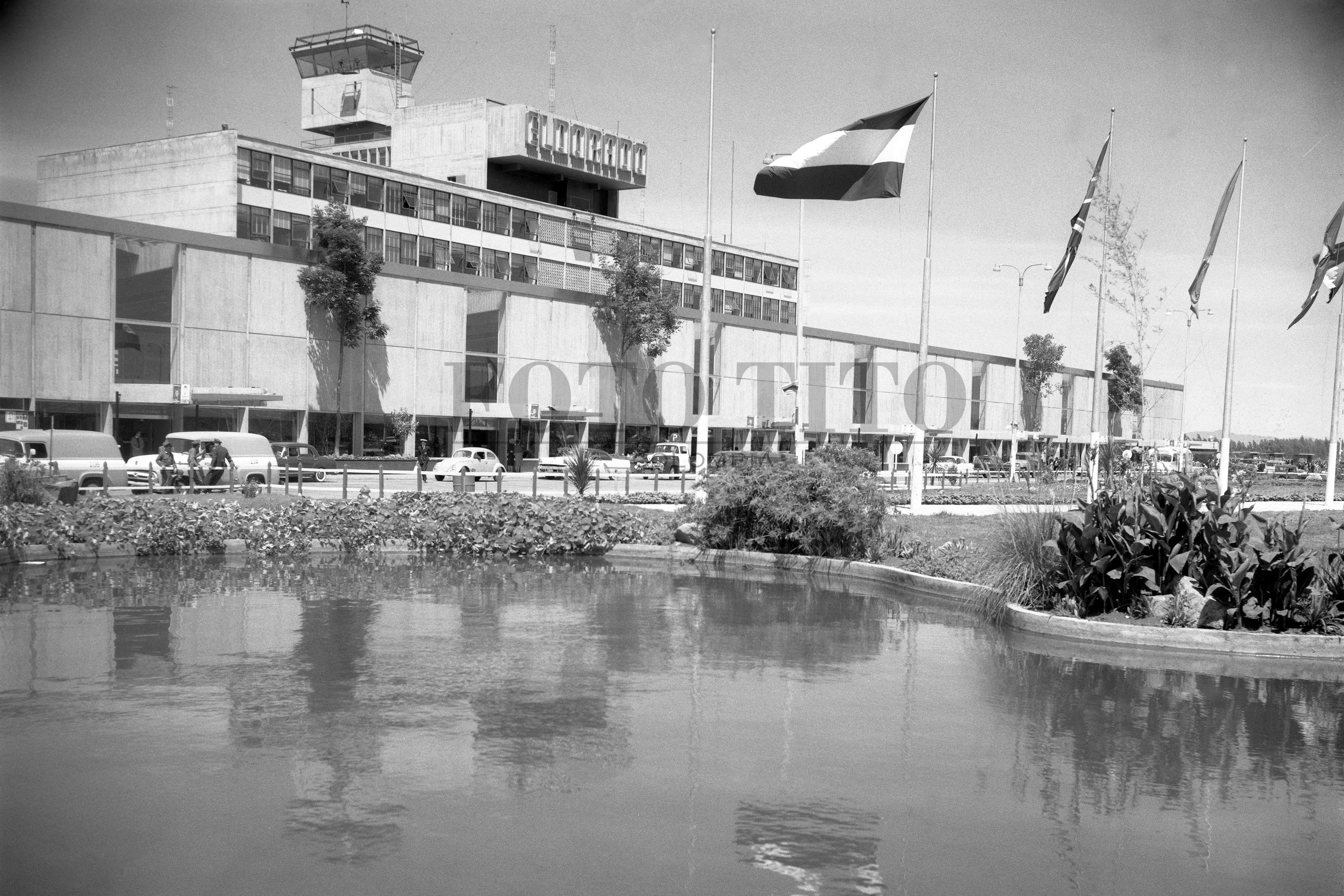
EL DORADO
The construction of the airport started in 1955 and it was inaugurated in 1959. There was a gorgeous artificial lake in front of it that was later drained and transformed into a parking lot.
Government detractors heavily criticized El Dorado airport claiming that it was “too big,” and “too far away.”
The airport soon became a preferred outing site for the people. In a city with little entertainment, going to the airport to watch planes leave and arrive was one of the best family plans, which included a “pot picnic”. However, the growing and disorderly crowds and one plane accident that happened too close to boarding gates forced the authorities to close these spaces. El Dorado was considered one of the best airports in Latin America for several decades.
4/18 first collection
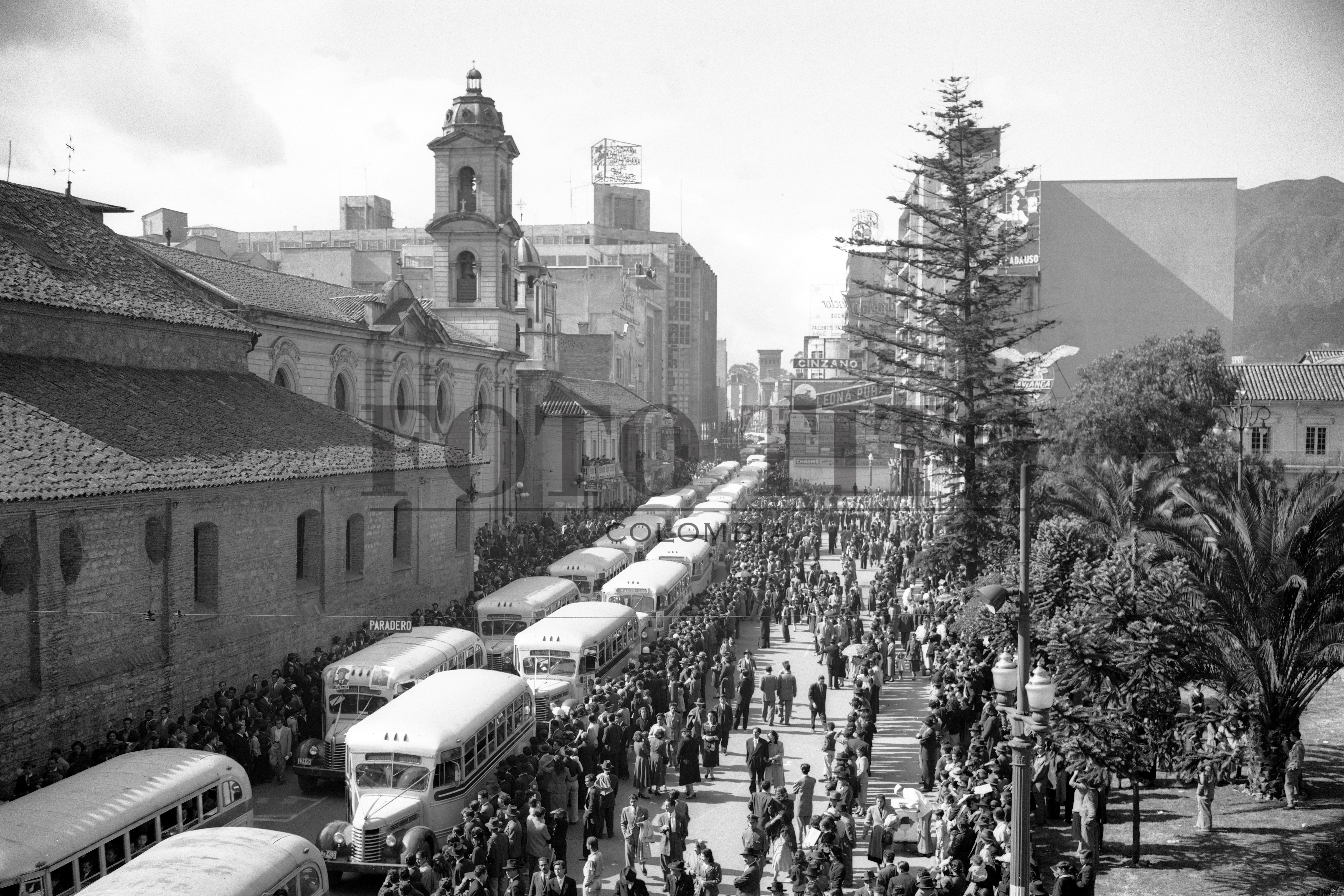
Vehicle Parade
The Streetcars of Bogota could never recover the losses that occurred during the 9th of April riots. The city purchased new equipment to supply the need for public transportation. In this parade, about 300 vehicles consisting of taxicabs, and buses rolled down Cra 7a. They would replace the streetcars routes and would facilitate transportation to new destinations within the city. “Carrera Septima” was quickly paved thus burying the former rails of the traditional streetcars.
5/18 First collection
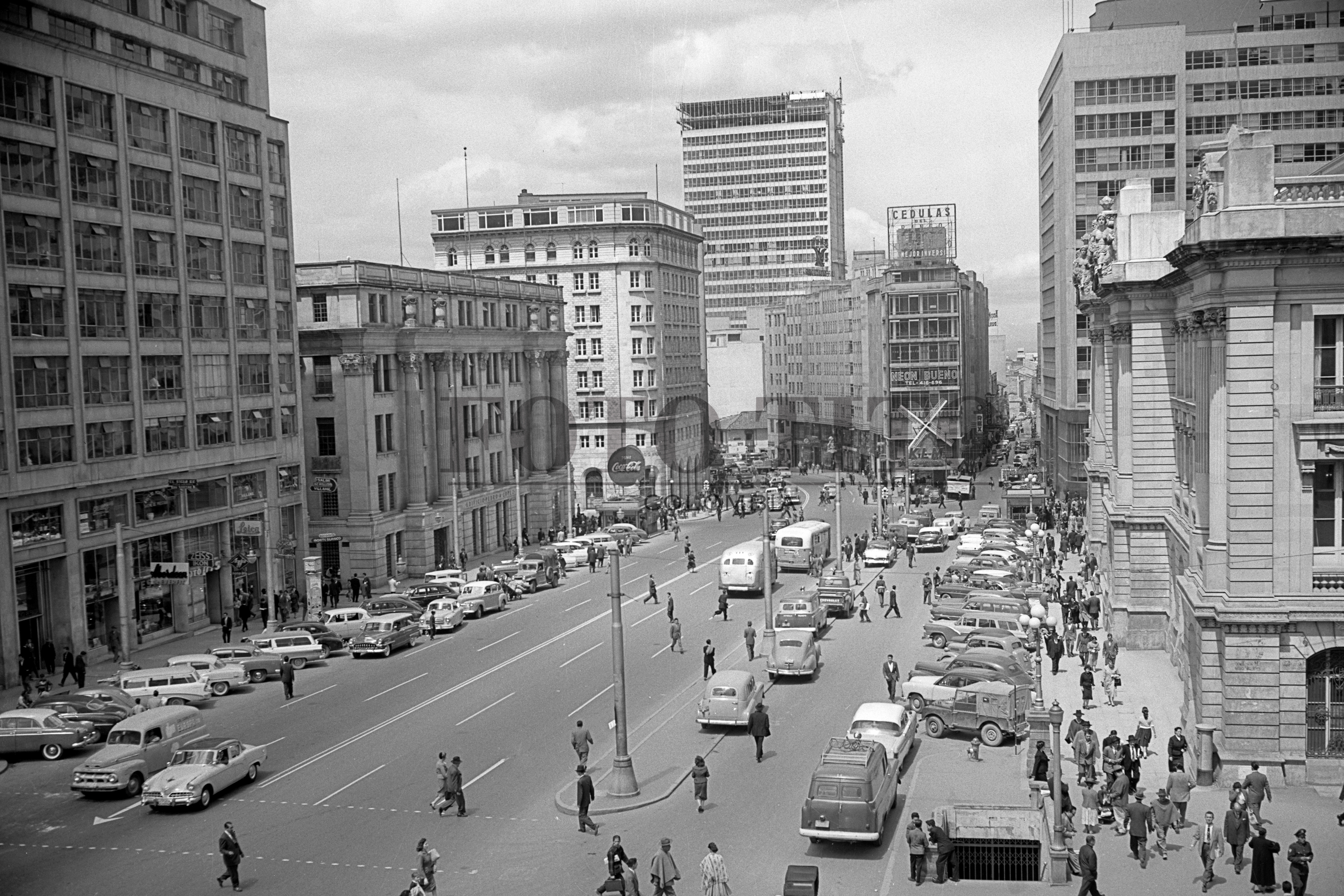
Western Side of Jimenez Avenue
Thanks to its architectural beauty and the elegance of its people, Bogota used to be compared to main cities like New York and London This image shows one of the four entrances to the legendary “Jimenez Undergrounds” that housed an auditorium, coffee shops and commercial stores. The image also shows the windmill of the Dutch airline, KLM and in the background, the Banco de Bogota building (still under construction) and which became the tallest building in the capital city during the 1950s.
6/18 Firts collection
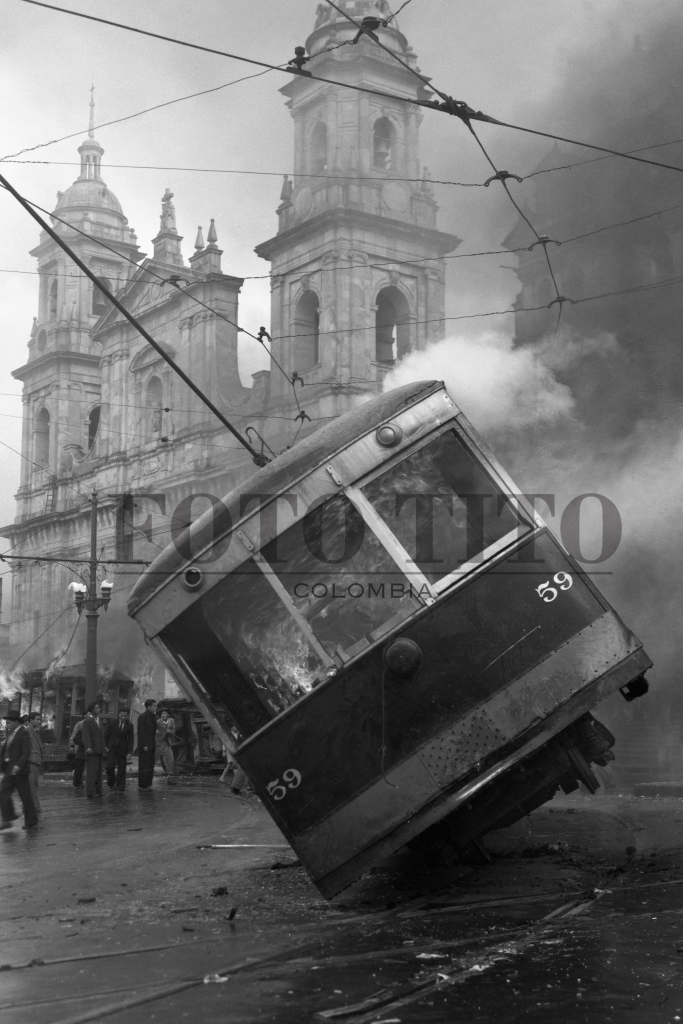
Streetcar in Flames
This image is considered an icon of “El Bogotazo,” the overturn of the dreams of thousands of Colombians; dreams of a Colombia that could not be. Chaos, destruction, and even indifference invaded Bogota.
Against all odds and facing danger, the photographer applies with rigour all the techniques to achieve a perfect composition in action.
This photo has been awarded in several contests.
7/18 First collection
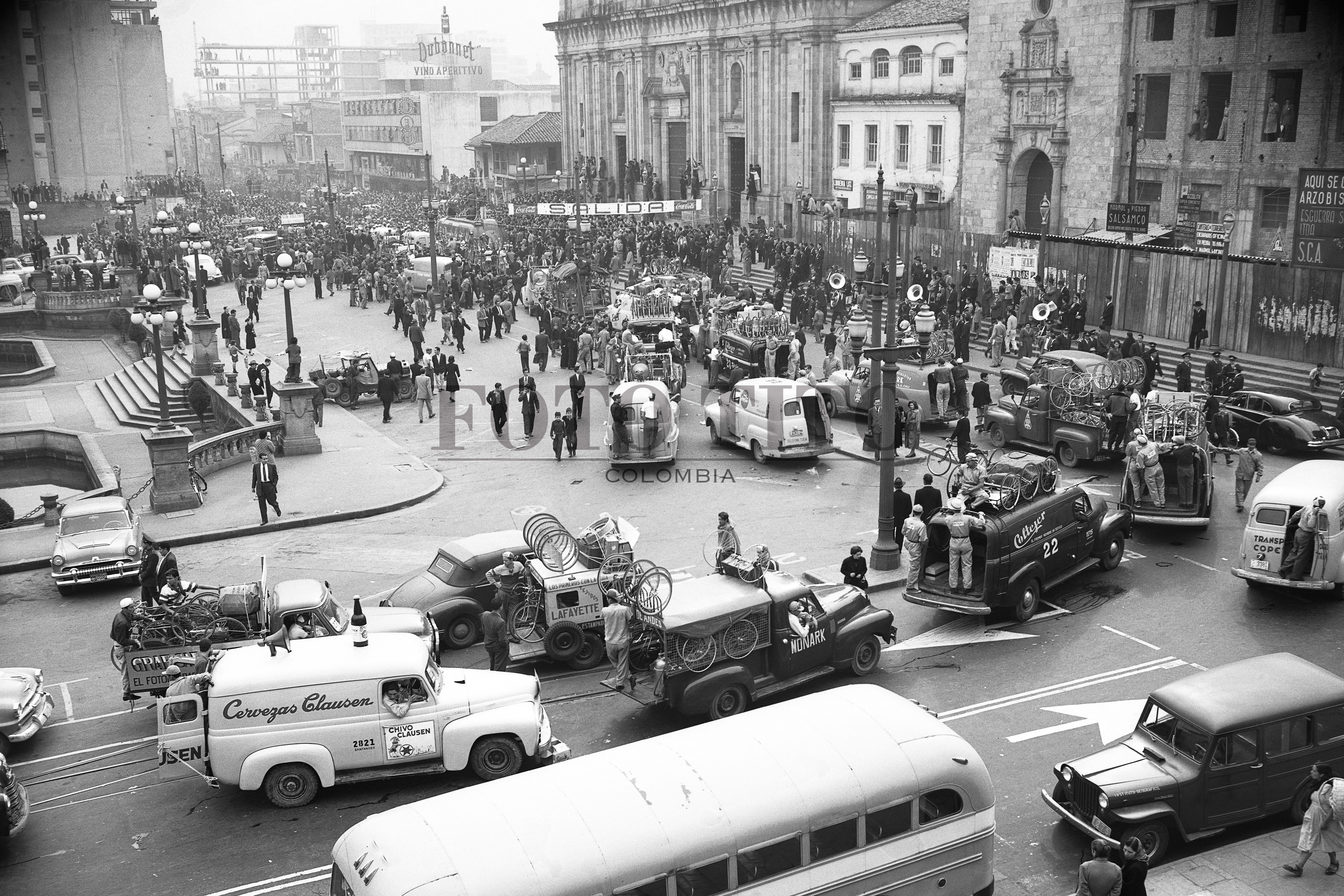
Starting Point of the Tour of Colombia in Bicycle
The Tour of Colombia in Bicycle's starting point was Bolivar Square. The Archbishop's Palace was under reconstruction and so was the northern portion of Carrera 7ª. This image shows the sponsor’s vehicles displaying advertisements and offering logistic support to the participants of this event.
8/18 Firts collection
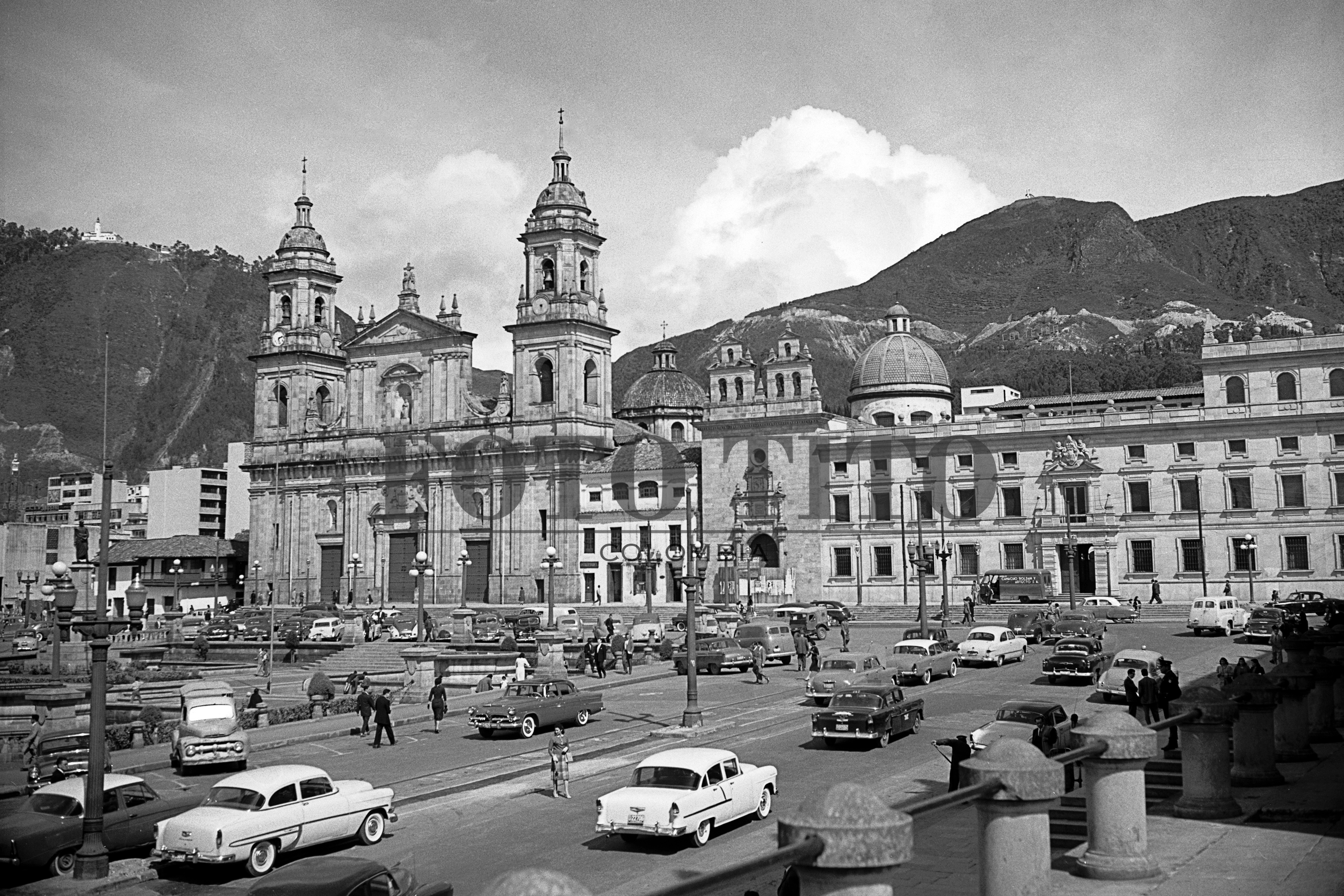
Bolívar Square
This is a beautiful image of Bolivar Square reconstructed from all the destruction suffered on the 9th of April 1948. The Archbishop's Palace had also been renovated. The Primatial Cathedral was also restored after having suffered serious damage during the 1939 earthquake.
9/18 Firts collection
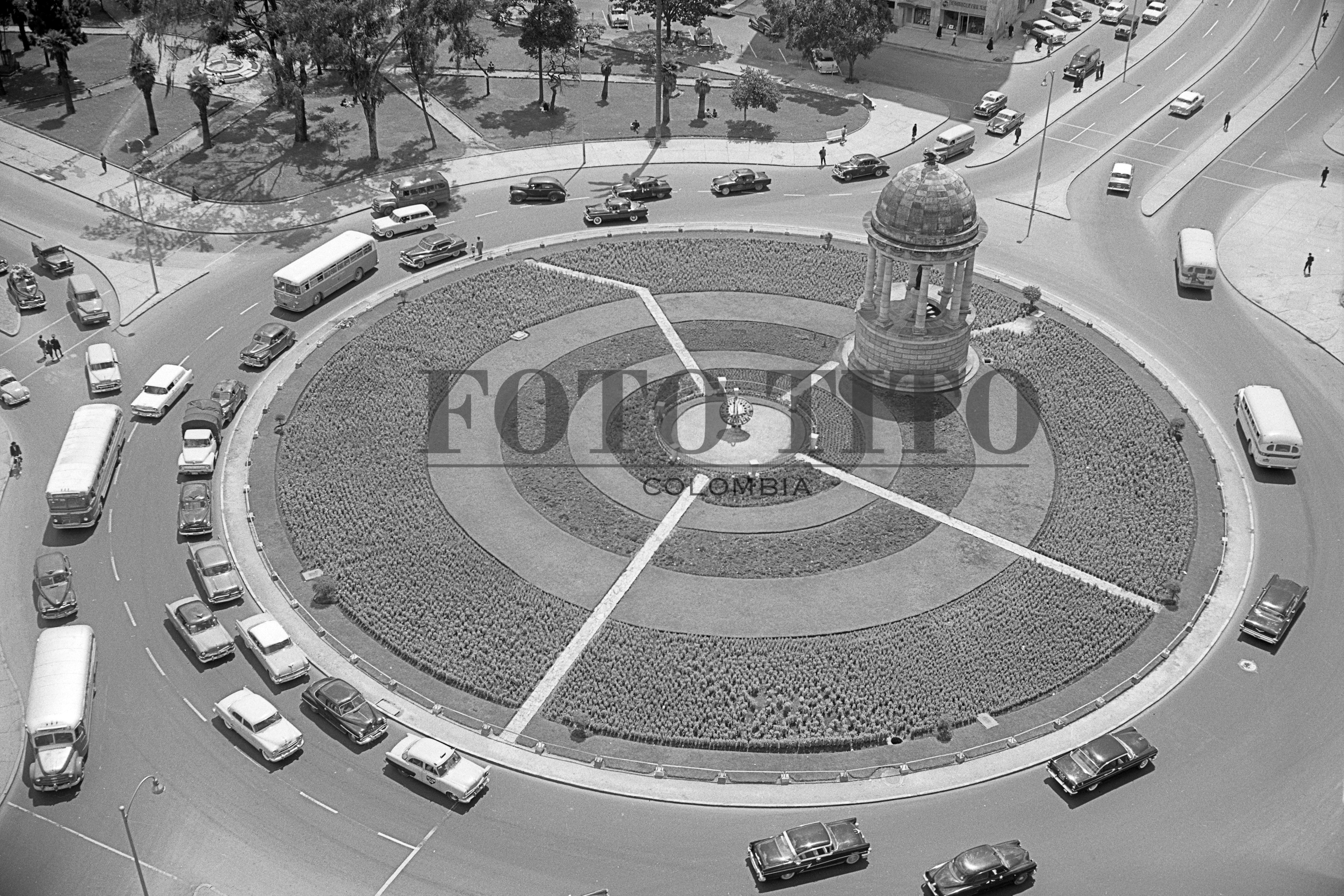
Kilometre Zero
This was the point of reference to indicate the distance between Bogota and anywhere in the world. It is also the reason the area of San Diego is known as the International Centre. The Bolivar Pavilion in this photo was later moved to the Parque de Los Periodistas (Park of Journalists) to give way to the Calle 26 overpass.
10/18 Firts collection
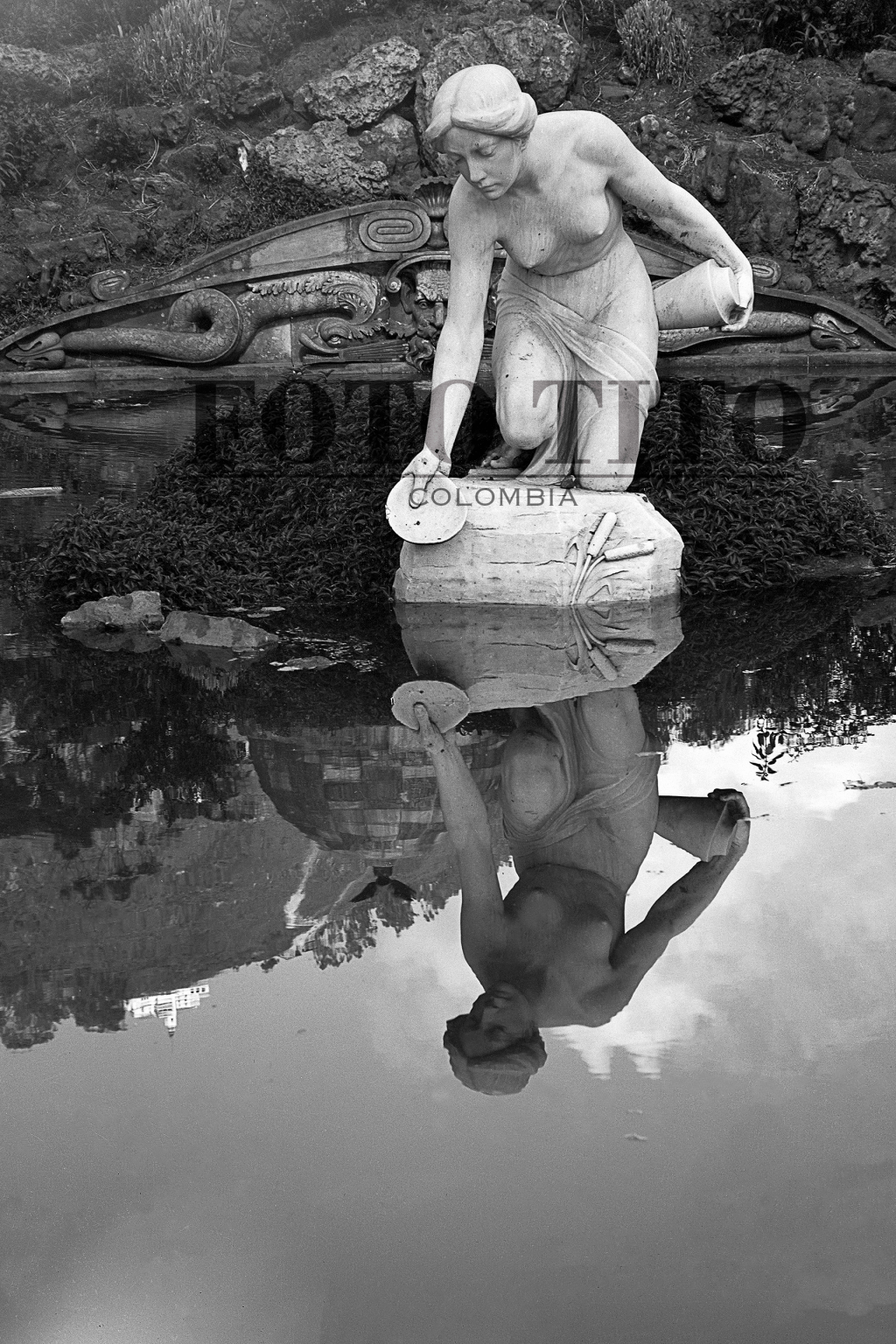
The Rebeca (A Reflection)
In 1928, the statue of Rebeca arrived from Europe to be placed at Centennial Park.
This magnificent image shows the upper section of the Bolivar Pavilion and the perfectly defined Monserrate Sanctuary in the reflection of the water without Photoshop! This was the result of precise attention to detail and timing as the waters needed to be still to achieve a mirror-like effect; the sky should be free of clouds closer to the hill to avoid saturation of textures thus achieving the photographer's desired goal.
Photographer Tito Celis received several awards for this photo.
11/18 Firts collection
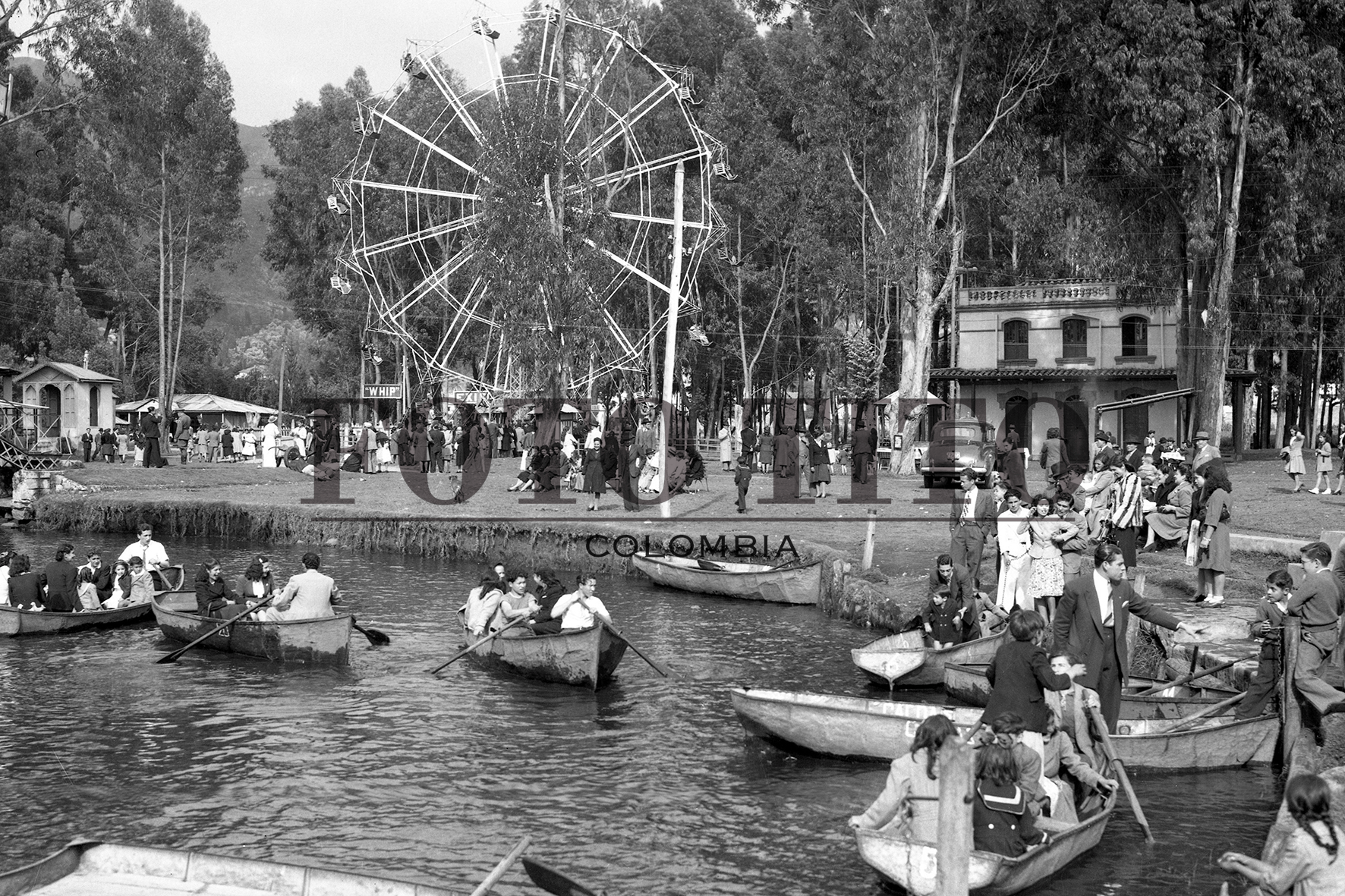
Gaitán Park and Lake
Back in time, Gaitan Park and Lake was a natural entertainment site outside Bogota. It was a preferred destination for the high-class society of the city and international tourists. Most of the park’s signage was both in English and Spanish.
Gaitan lake was drained, and the entire area was transformed into a neighbourhood and housing developments. Years later, due to the humidity of the terrain, several buildings dangerously toppled; they had to be demolished and rebuilt.
At present, Unilago and Centro de Alta Tecnologia (High Tech Centre) can be found there.
12/18 Firts collection
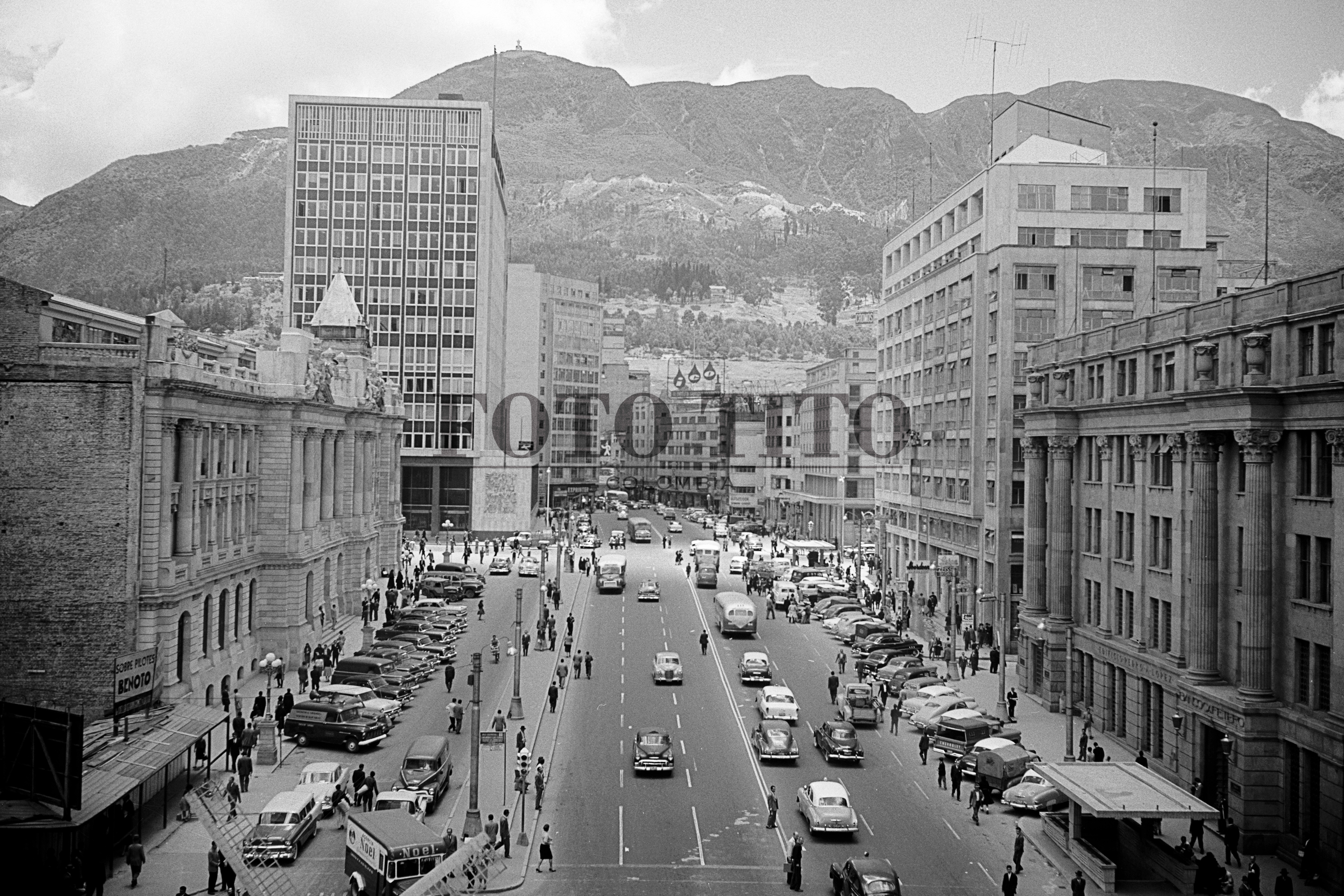
Eastern Side of Jimenez Avenue
This photo shows San Francisco Palace which was, back then the central office of the Cundinamarca Government. Behind it, there is the recently inaugurated Bank of The Republic which used to be the old Granada Hotel.
The image also shows the then newly remodelled building of the “El Tiempo” (The Time) diary newspaper, which is now the main office of City TV (City TV news broadcast).
Downtown Bogota used to be stunning and the epicentre of Commercial, cultural, and social development. Time has changed it all… for the best? For the worst?
13/18 Firts collection
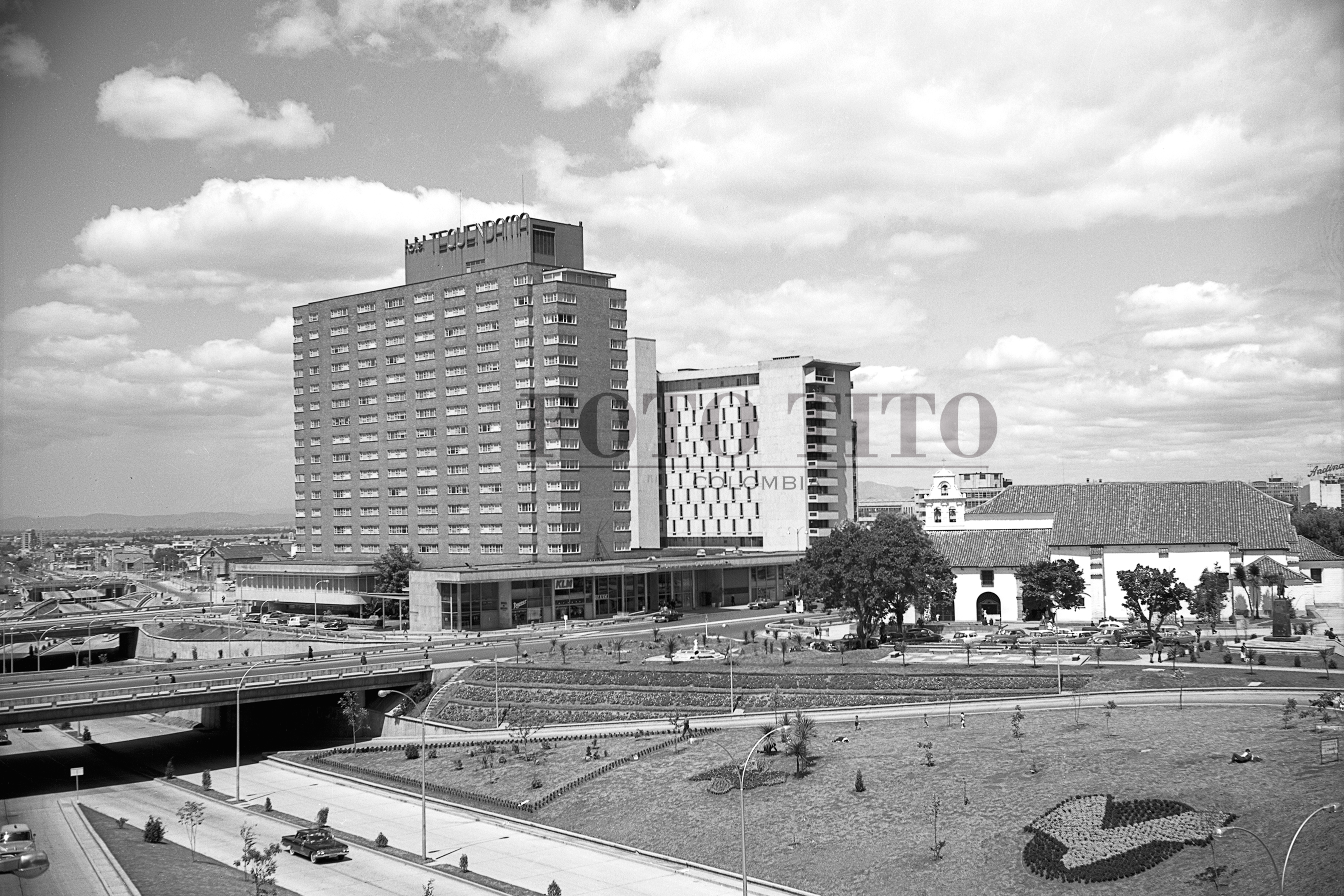
Calle 26 Overpass
This overpass was developed by architect and former Mayor of Bogota, Fernando Mazuera. Its purpose was to connect downtown Bogota to the El Dorado International Airport and to open opportunities for great urban development around it. The construction of this overpass took several years to be completed. It was a complex project that included the draining of a wetland found during excavation. This wetland was already known during the times of colonization with the name of “Pozo de San Diego.”
Mazuera was heavily criticized and even considered “crazy” to the point of facing public audiences to defend his project. The citizens of Bogota were terrified of the enormous hole being dug just at the core of the International Centre.
Today, this project is admired as it has fulfilled its goal to facilitate mobility and connection within the city.
This photo shows The Church of San Diego and the tower of the Tequendama International Centre next to the hotels with the same name.
14/18 Firts collection
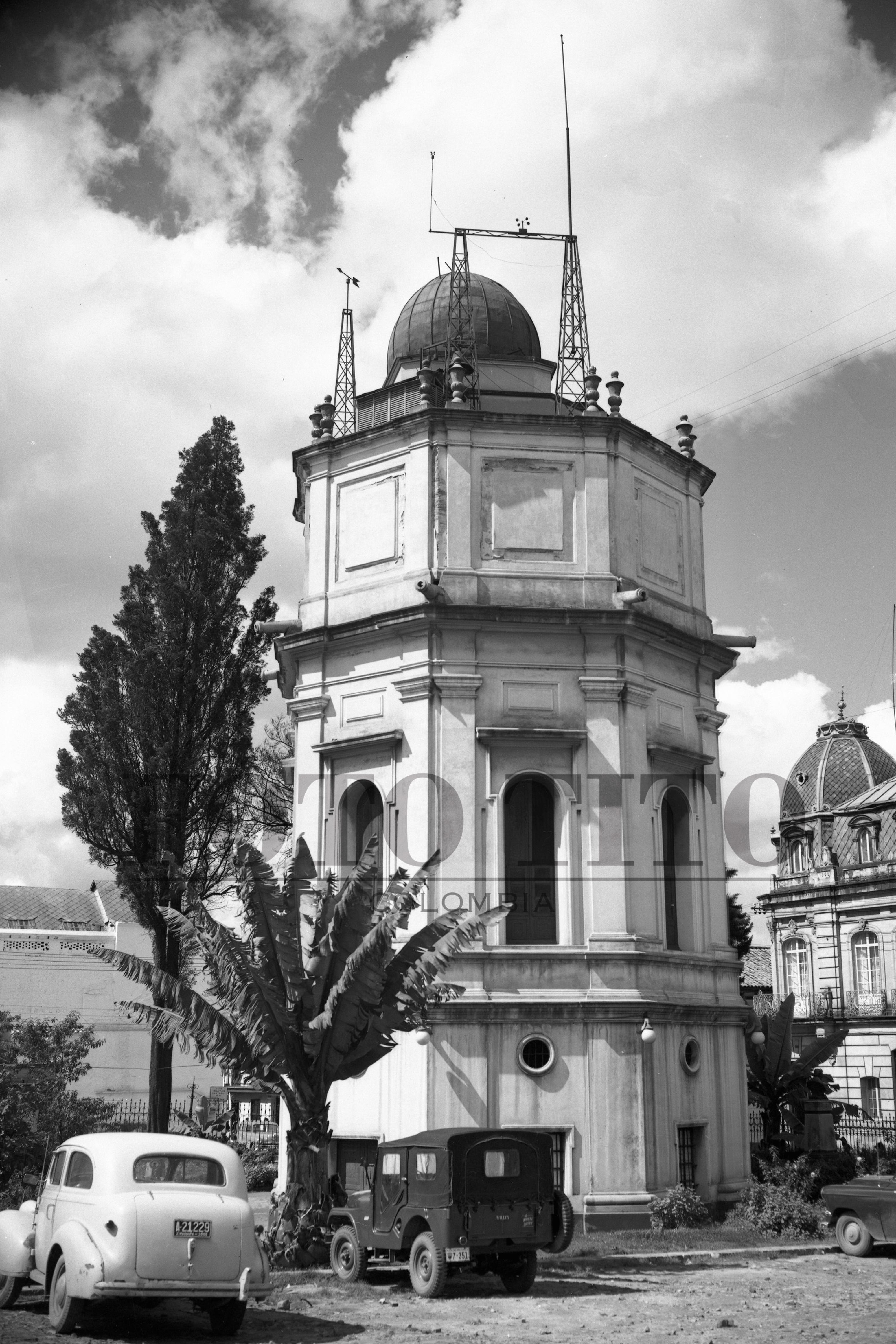
Astronomic Observatory
The observatory was designed by and built under the supervision of the architect Fray Domingo de Petres, with a budget from the Botanic Expedition and under the approval of Jose Celestino Mutis. This elegant construction also served as a headquarters to the patriotic conspiracy that led to the 20th of July 1810. The observatory is now enclosed between the National Capitol and the Gardens of the Nariño Palace (the president’s house), in front of Nuñez Plaza. The young and small trees in this image, still there, and now grown, embrace and hide the observatory from plain sight.
Note: Petres was also in charge of the design of the Primatial Cathedral of Bogota.
15/18 First collection
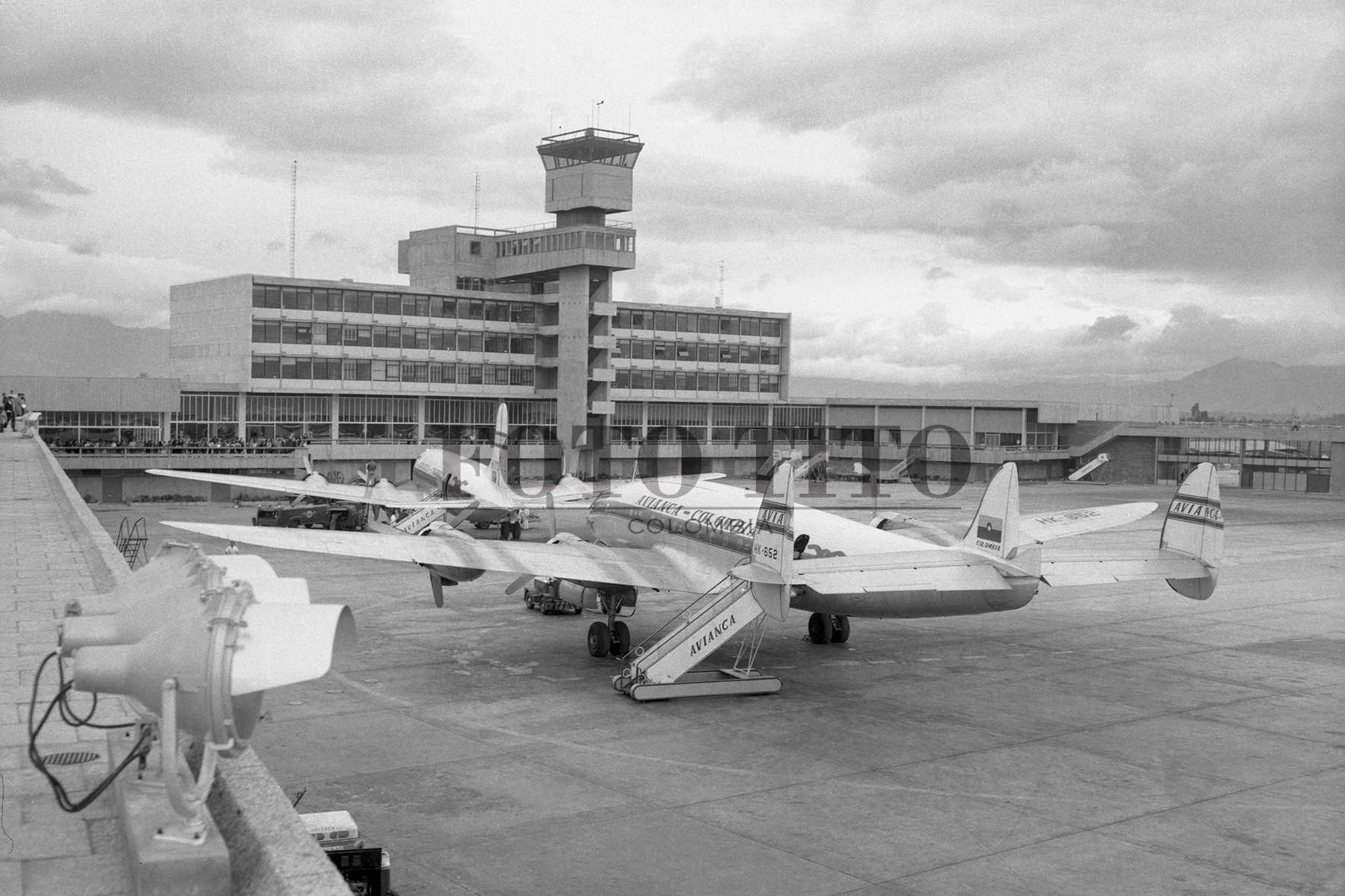
Superconstellation
This spectacular plane was the most modern commercial flight transportation at that time. Highly trained flight and cabin crew and even a first-class section could guarantee a safe, comfortable, and autonomous nonstop flight Bogota-Madrid. Two planes of these characteristics, the Constellation and the Superconstellation arrived in Colombia to be a part of Avianca Airlines.
16/18 Firts colletion
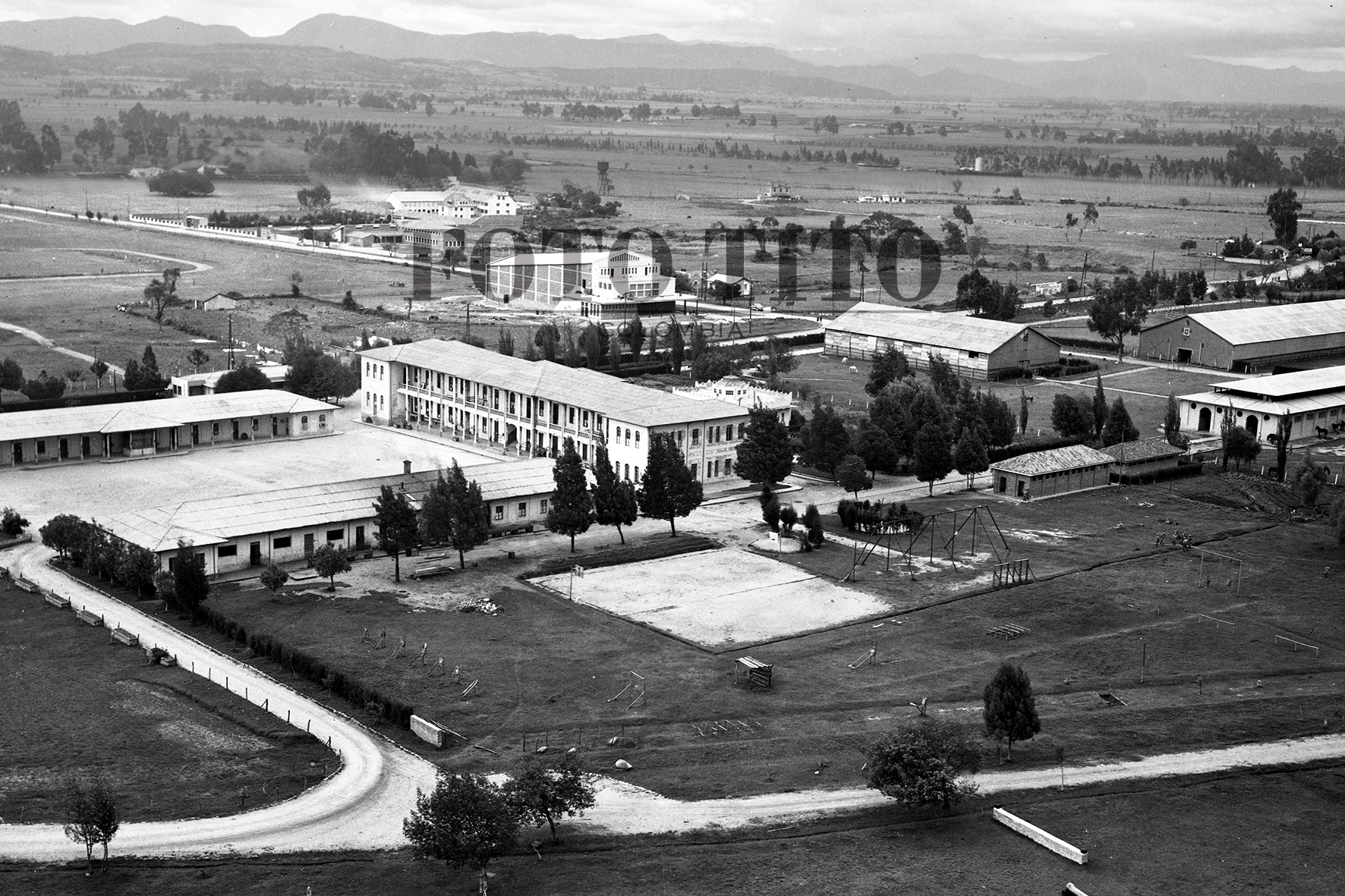
Cavalry School
This beautiful panoramic view displays the “Santa Barbara” lots and the nowadays known “Pepe Sierra” Avenue before all the housing developments. The “Patria Theater” is across from the Cavalry School, and in the background, the Usaquen Train Station can be seen.
Usaquen was a municipality near Bogota but then it was integrated in the capital’s city’s growth. The way to get from Bogota to Usaquen was the now-known Carrera 7ª (Seventh Street). During the “Colonization Time” this street was known as the “Road to Salt,” the only way from Bogota to Zipaquira (Where the salt mines are).
17/18 Firts collection
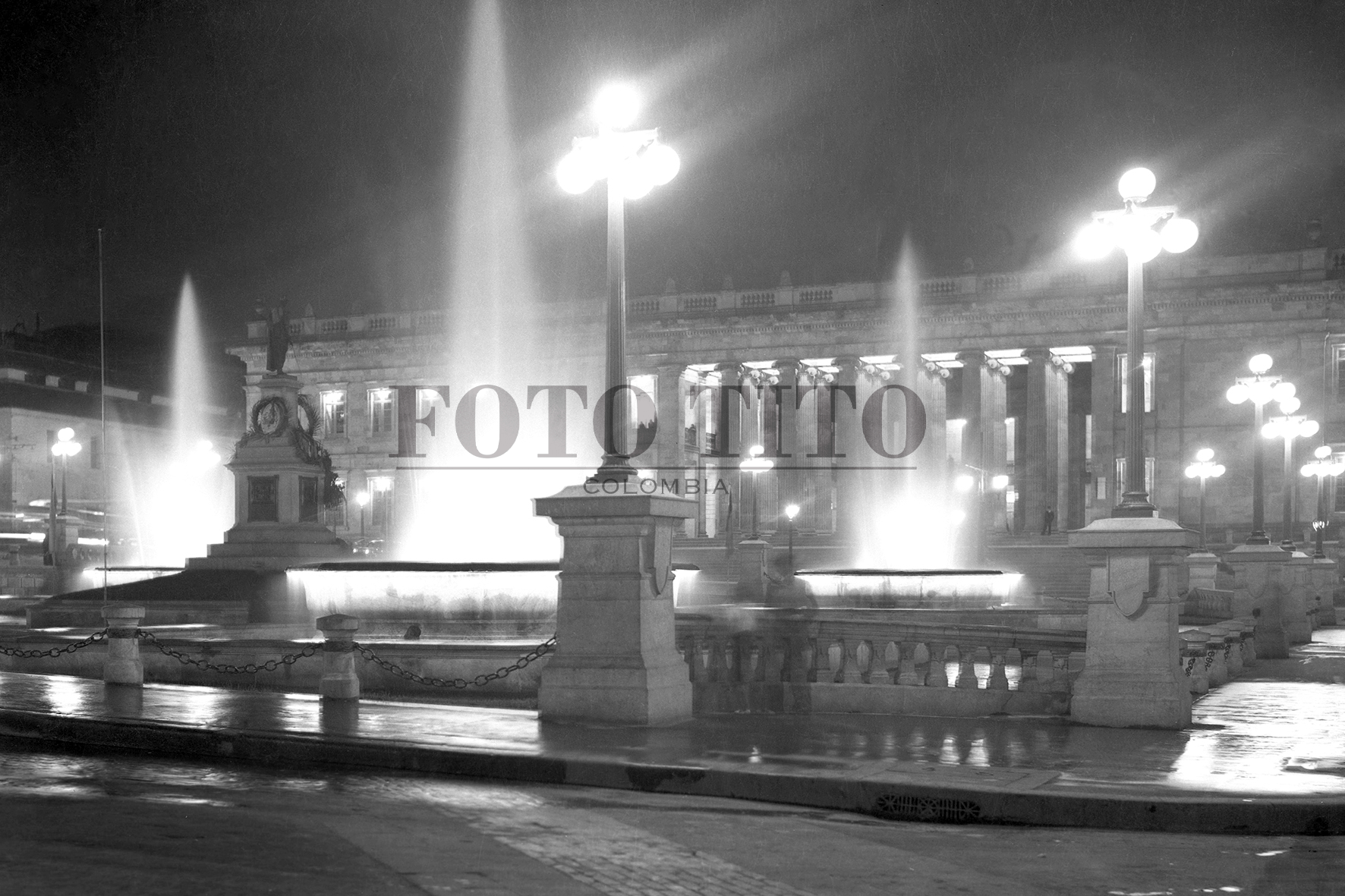
illuminated Fountains
It was Bogota’s 400th-year celebration. This photo was taken on the evening of the 6th of August.
Some people think they see “ghostly images” in it. The truth is that it is a technical overexposure that was necessary to successfully take this photo at night.
Opposite side and complement to photo No. 00001
18/18 Firts collection
